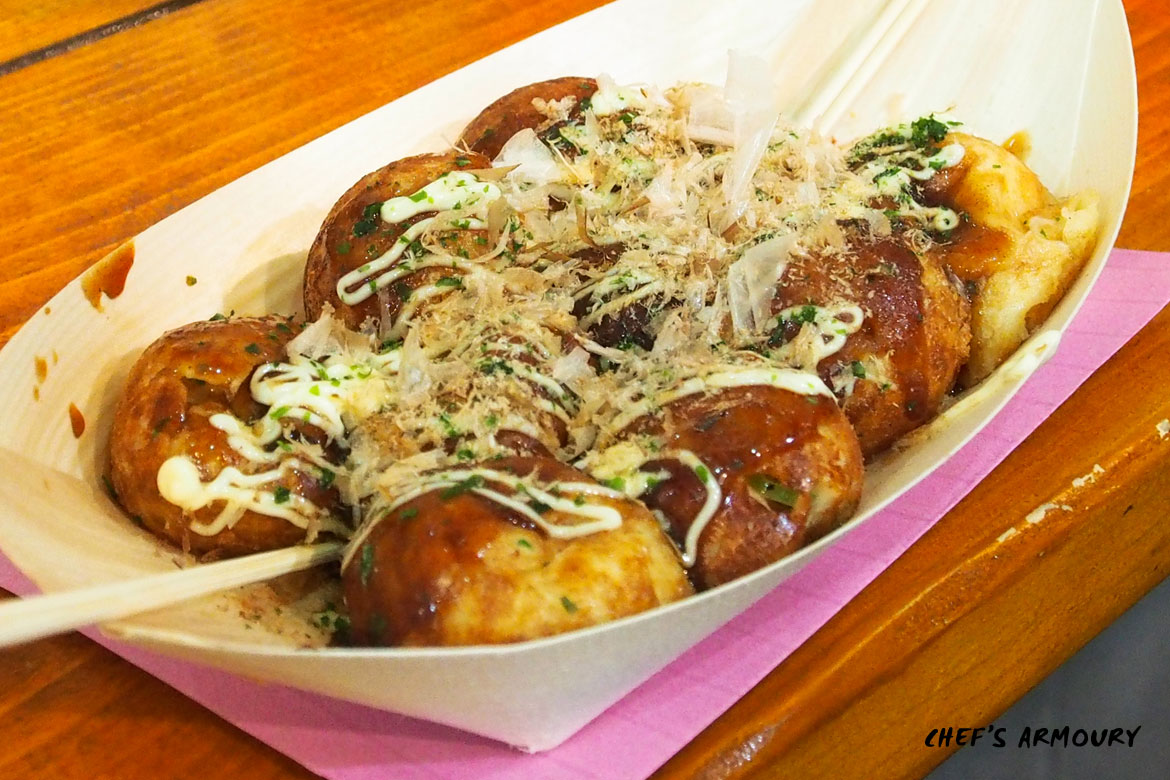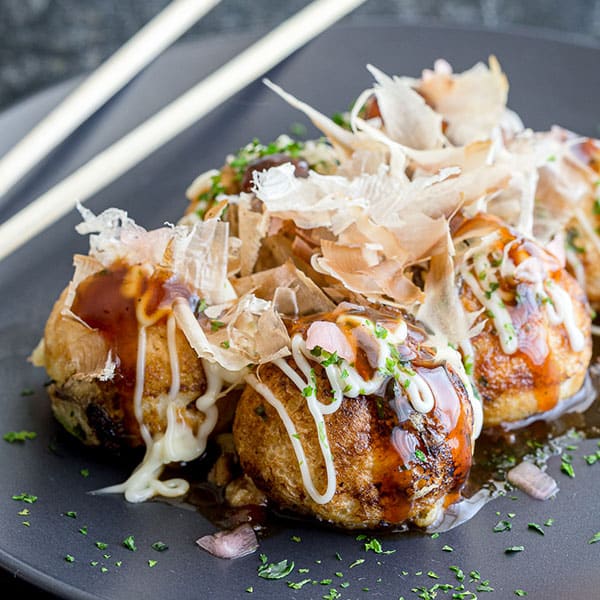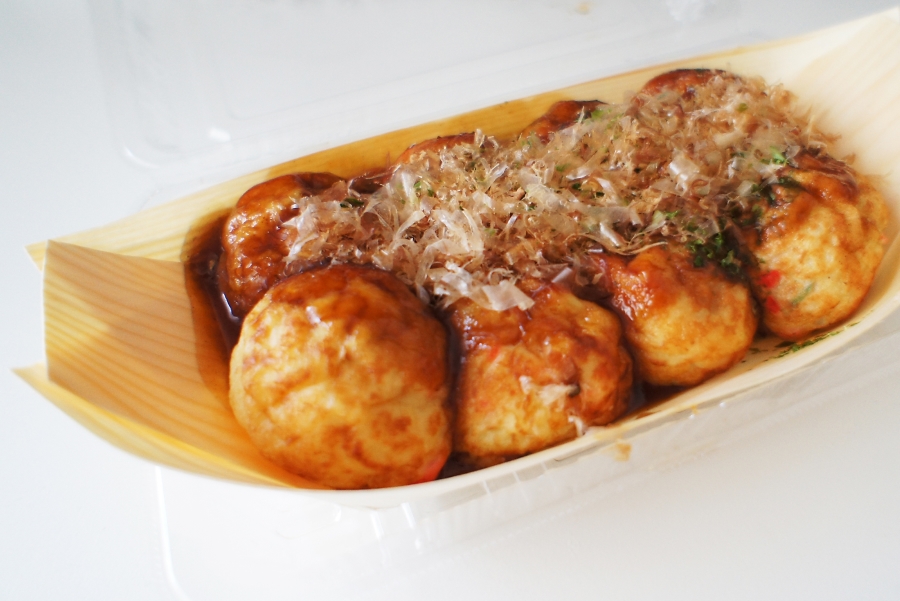Takoyaki
octopus balls, 章魚燒, たこ焼き
Takoyaki is a ball-shaped Japanese snack made of a wheat flour-based batter and cooked in a special molded pan. It is typically filled with minced or diced octopus (tako), tempura scraps (tenkasu), pickled ginger (beni shoga), and green onion (negi). The balls are brushed with takoyaki sauce (similar to Worcestershire sauce) and mayonnaise, and then sprinkled with green laver (aonori) and shavings of dried bonito (katsuobushi). Yaki comes from yaku (焼く), which is one of the cooking methods in Japanese cuisine, meaning 'to grill', and can be found in the names of other dishes in Japanese cuisine such as okonomiyaki and ikayaki (other famous Osakan dishes). Typically, it is eaten as a snack or between meals, but in some areas it is served as a side dish with rice. It is an example of konamono (konamon in the Kansai dialect), or flour-based Japanese cuisine. Takoyaki was first popularized in Osaka, where a street vendor named Tomekichi Endo is credited with its invention in 1935. In the early 20th century, in Osaka, there were snacks called choboyaki (ちょぼ焼き) and radioyaki (ラジオ焼き or ラヂオ焼き, rajioyaki) that contained pieces of beef, konjac or other ingredients. Meanwhile, in Akashi in Hyōgo Prefecture, there was a snack made of an egg-rich batter and octopus, later named akashiyaki (明石焼き). Endo combined them and began selling it under the name takoyaki. It spread throughout Osaka, with various stalls making improvements, and after the Pacific War, the style of eating takoyaki with sauce and mayonnaise was established. Endo's takoyaki shop, named Aizuya after his hometown, still exists today and serves the original takoyaki without sauce or mayonnaise.
Source: Wikipedia





